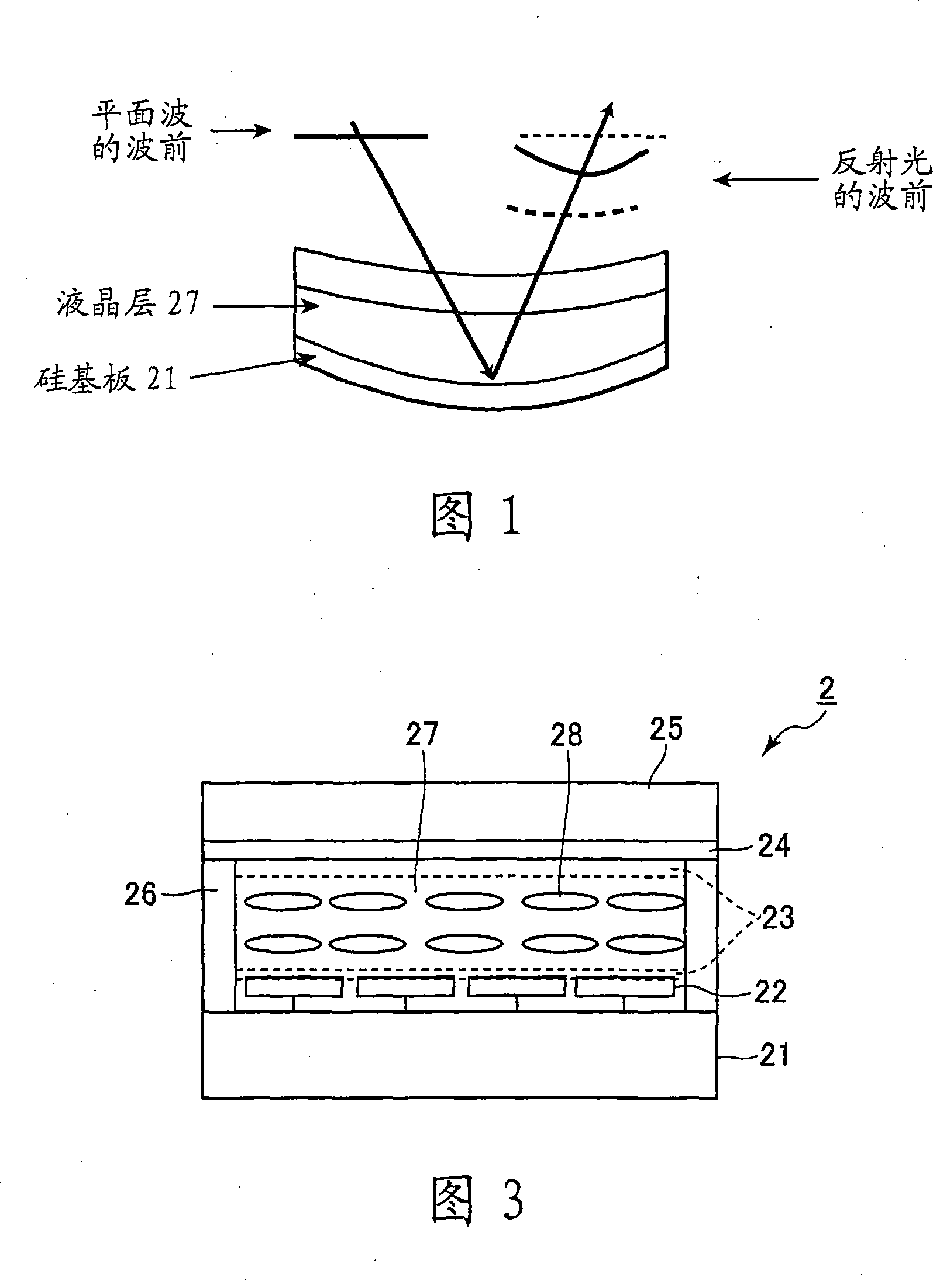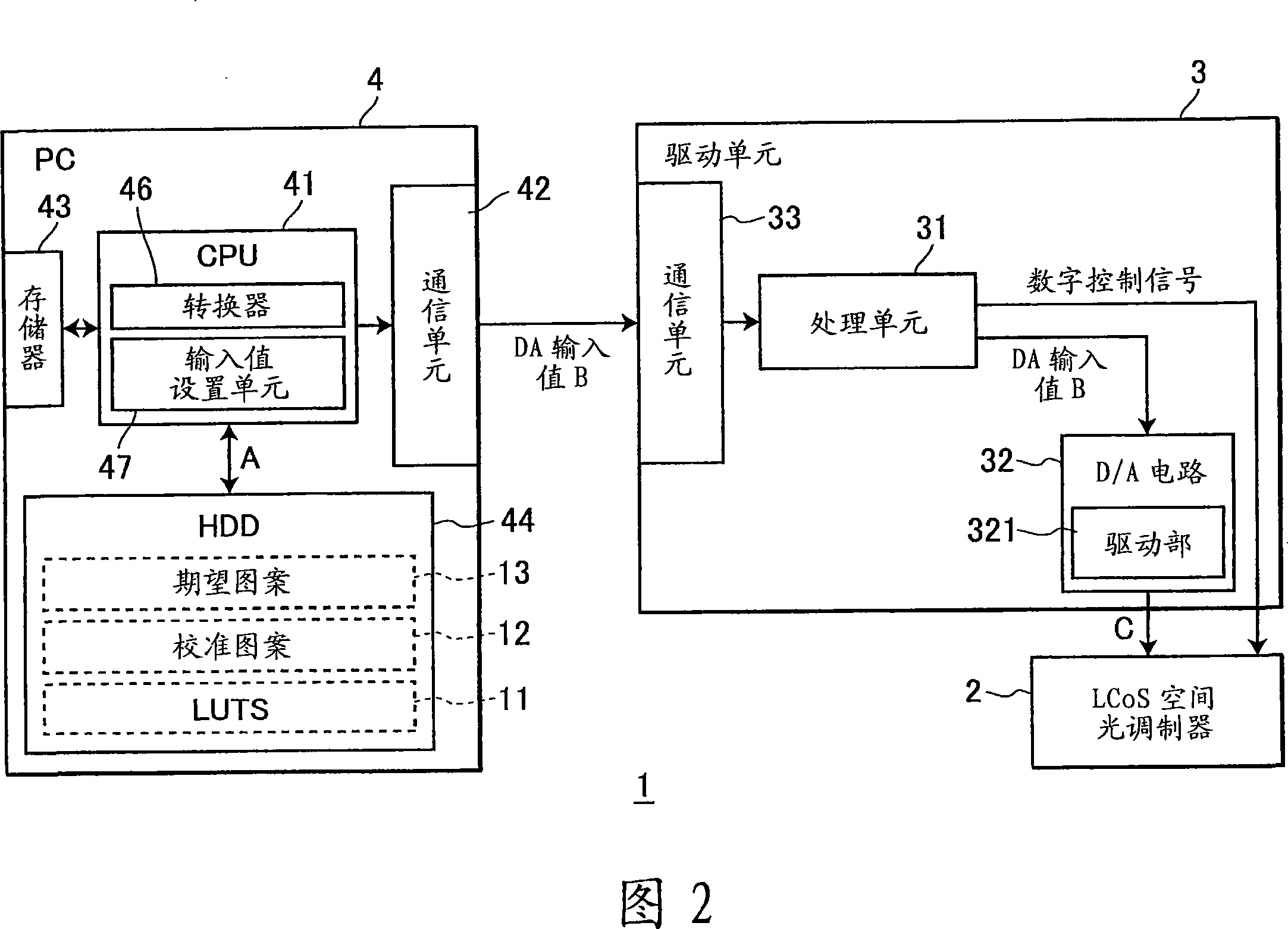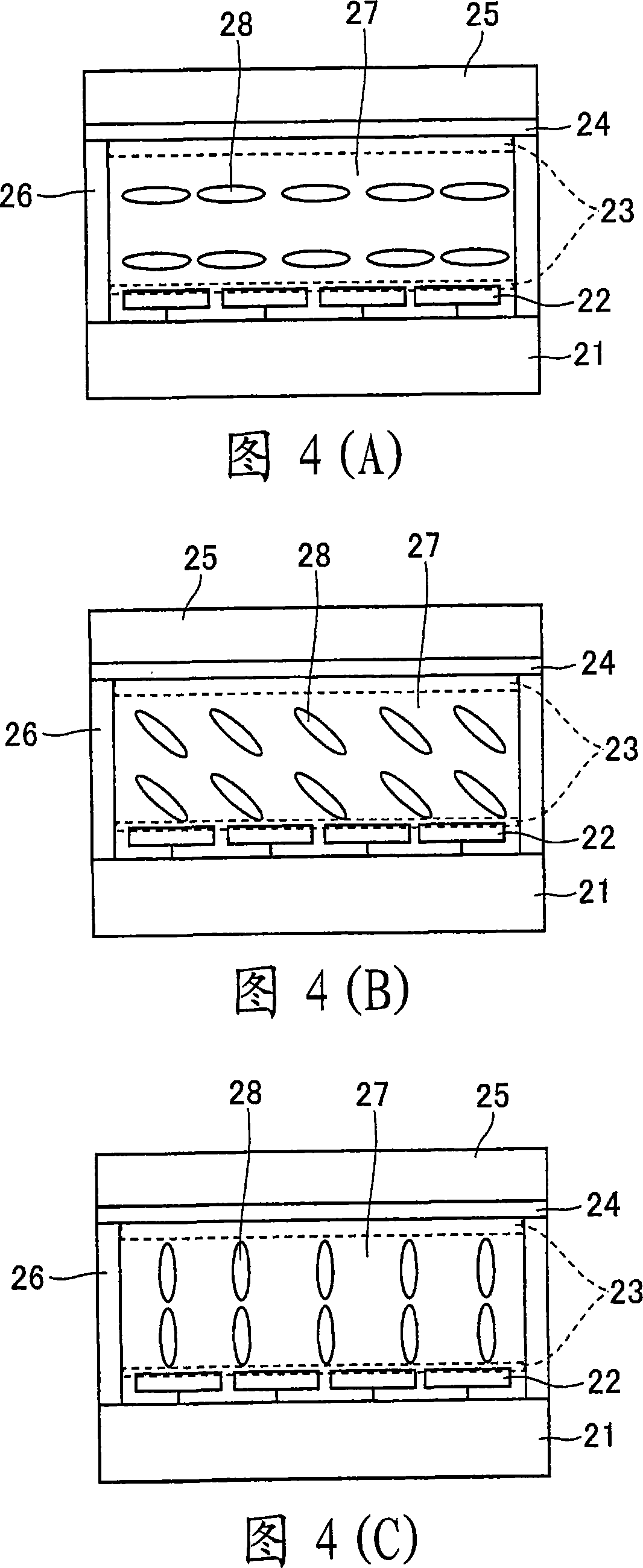Phase-modulating apparatus
A technology of phase modulation and spatial light modulator, which is applied in nonlinear optics, static indicators, optics, etc., and can solve the problems that the irregularity and inaccuracy of the phase modulation amount cannot be corrected
- Summary
- Abstract
- Description
- Claims
- Application Information
AI Technical Summary
Problems solved by technology
Method used
Image
Examples
no. 1 approach
[0057] First, a first embodiment of the present invention will be described with reference to FIGS. 2 to 17(B). As shown in FIG. 2 , the LCoS phase modulator 1 according to the first embodiment includes: an LCoS spatial light modulator 2; a driving unit 3 for applying a voltage to the LCoS spatial light modulator 2; and a control unit 4 for applying a voltage to the LCoS spatial light modulator 2; Data such as control input values described later are sent to the drive unit 3 .
[0058] As shown in FIG. 3 , the LCoS spatial light modulator 2 includes: a silicon substrate 21 , a spacer 26 , and a glass substrate 25 bonded to the silicon substrate 21 through the spacer 26 . A space formed between the silicon substrate 21 and the glass substrate 25 is filled with a liquid crystal layer 27 having liquid crystal molecules 28 . A plurality of pixel electrodes 22 and a circuit (not shown) for controlling voltage applied to the pixel electrodes 22 are formed on the silicon substrate...
no. 2 approach
[0148] Next, a second embodiment of the present invention will be described with reference to FIGS. 22 to 29 . In the first embodiment described above, the LUT 11 is prepared for each pixel to calibrate the voltage-dependent phase modulation characteristic of the pixel. In the second embodiment, a plurality of pixels having similar voltage-dependent phase modulation characteristics are combined into one group, and one LUT 51 is prepared for each group.
[0149] As shown in FIG. 22 , the LCoS phase modulator 500 according to this embodiment includes: an LCoS spatial light modulator 2 , a drive unit 530 for driving the LCoS spatial light modulator 2 with a voltage, and a control unit 4 . Components and components similar to those of the first embodiment described above are denoted by the same reference numerals to avoid duplication of description.
[0150] In the second embodiment, a total of T pixels are divided into r groups based on their voltage-dependent phase modulation c...
no. 8 approach
[0254] It is also possible to replace the D / A circuit 532 with a pulse modulation circuit. With this configuration, the pulse modulation circuit outputs a digital pulse modulation signal for driving the LCoS spatial modulator.
[0255]
[0256] In addition, the approximate polynomial data (coefficient a k(I),g-ave , where 1≦I≦J, and the value is “const”) is stored as a reference data set in the ROM (not shown) of the drive unit 530 instead of the LUT 51 . Similar to the method (S128) of generating the LUT 51 in the second embodiment, according to the number of times of returning to S123, this data is used to obtain equations (18-1) to (18-3). Therefore, the relationship between the control input value A and the DA input value B can be obtained from Equation (18-1) to Equation (18-3). When the phase modulation amount is measured, the LUT processor 536 converts the control input value A into a DA input value B based on the data (S107). Instead of the LUT 51 or the coefficie...
PUM
 Login to View More
Login to View More Abstract
Description
Claims
Application Information
 Login to View More
Login to View More - R&D
- Intellectual Property
- Life Sciences
- Materials
- Tech Scout
- Unparalleled Data Quality
- Higher Quality Content
- 60% Fewer Hallucinations
Browse by: Latest US Patents, China's latest patents, Technical Efficacy Thesaurus, Application Domain, Technology Topic, Popular Technical Reports.
© 2025 PatSnap. All rights reserved.Legal|Privacy policy|Modern Slavery Act Transparency Statement|Sitemap|About US| Contact US: help@patsnap.com



